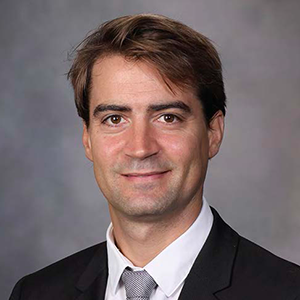The goals of this clinical case are to discuss the different therapeutic options in case of acetabular loosening in total hip arthroplasty, to propose an innovative technique, and to see outcomes after revision hip surgery.
- 41-year-old male
- Femoral head necrosis
- THA 16 years ago
- In pain since 2015, no story of infection
- On physical examination, he presents limp, stiffness and pain in rotations
Imagery
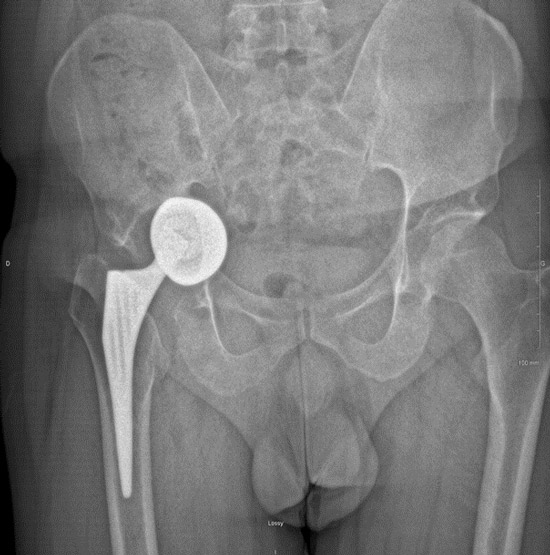
Which classification allows us to classify this pathology and what is its grade?
- ✔️ Paprosky classification grade 2c
How would you manage this condition?
- ✔️ Partial surgical revision in 1 time after eliminating a possible chronic infection
Which type of implant would you use? How do you manage bone loss?
- ✔️ Revision of acetabular cup bridging areas of acetabular bone loss
Final strategy decision
In this case, we decided to perform a scan-guided pre-operative puncture to rule out a septic cause. We then implanted a custom-made 3D implant (ADLER) to compensate for the bone defect and perform a unipolar revision of the acetabular side with a dual mobility cemented cup. We made this choice because the bone loss could not have been compensated for by an autograft and/or a support ring.
1. Meding JB, Meding LK. Custom Triflange Acetabular Implants: Average 10-Year Follow-Up. J Arthroplasty 2023;38(7):S201–5.
2. Alexander JS, Lombardi AV, Berend KR, Morris MJ, Adams JB, Crawford DA. Custom Triflange Acetabular Components For Catastrophic Bone Loss: Minimum 5-Year Results. J Arthroplasty 2023;38(7):1330–4.
3. Broekhuis D, Tordoir R, Vallinga Z, Schoones J, Pijls B, Nelissen R. Custom triflange acetabular components for large acetabular defect reconstruction in revision total hip arthroplasty: a systematic review and meta-analysis on 1218 patients. EFORT Open Rev 2023;8(7):522–31.
Pre-op planification
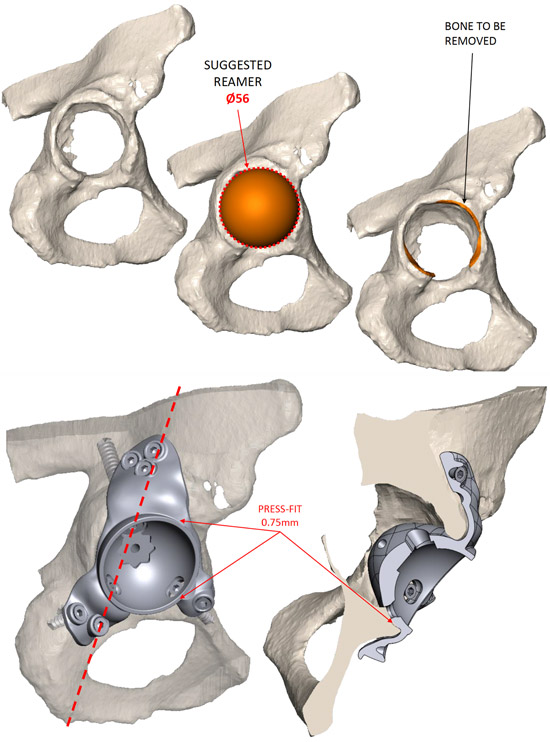
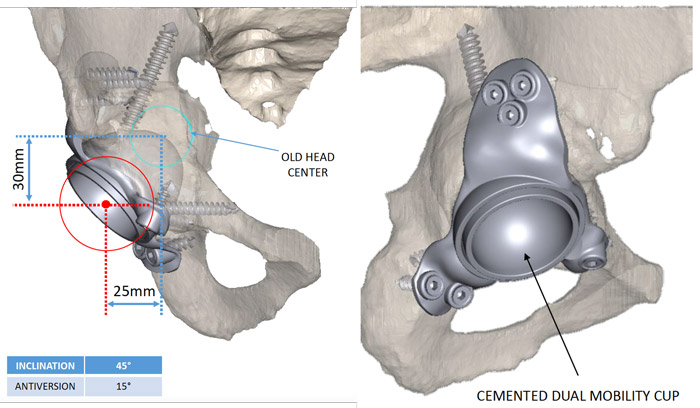
Postoperative imagery
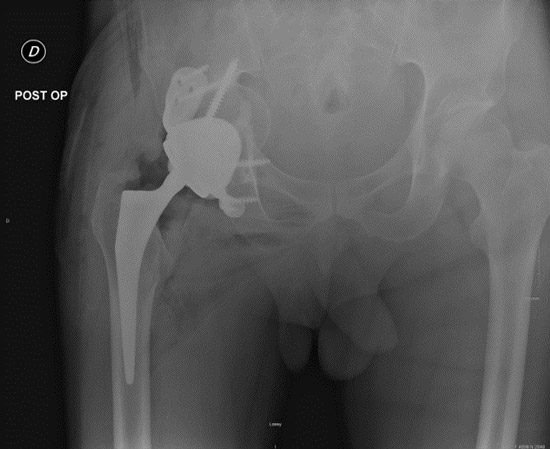
> 2 years imagery
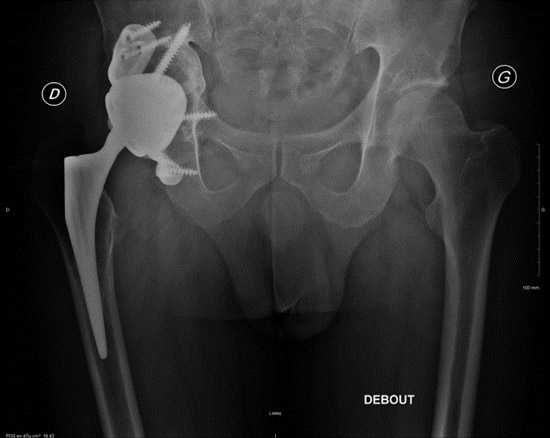
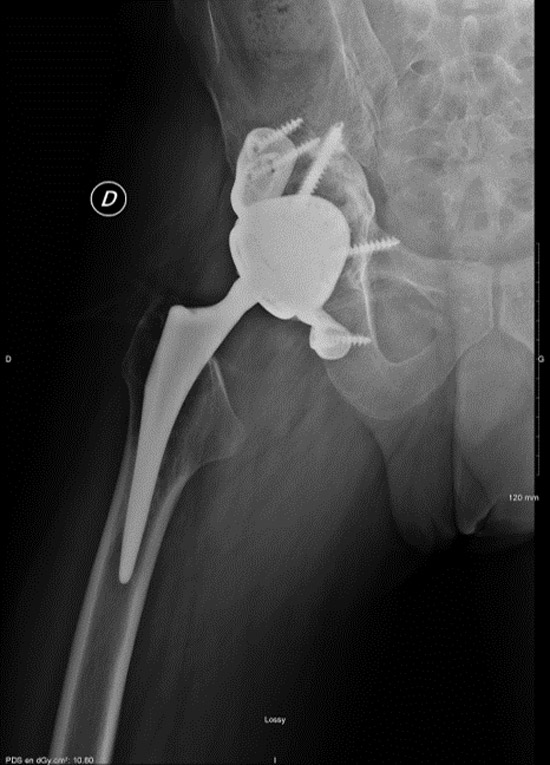
Function / Clinical examination
- All activities without limitation, including running
- « Forgotten hip »
- 110/20/30/45

